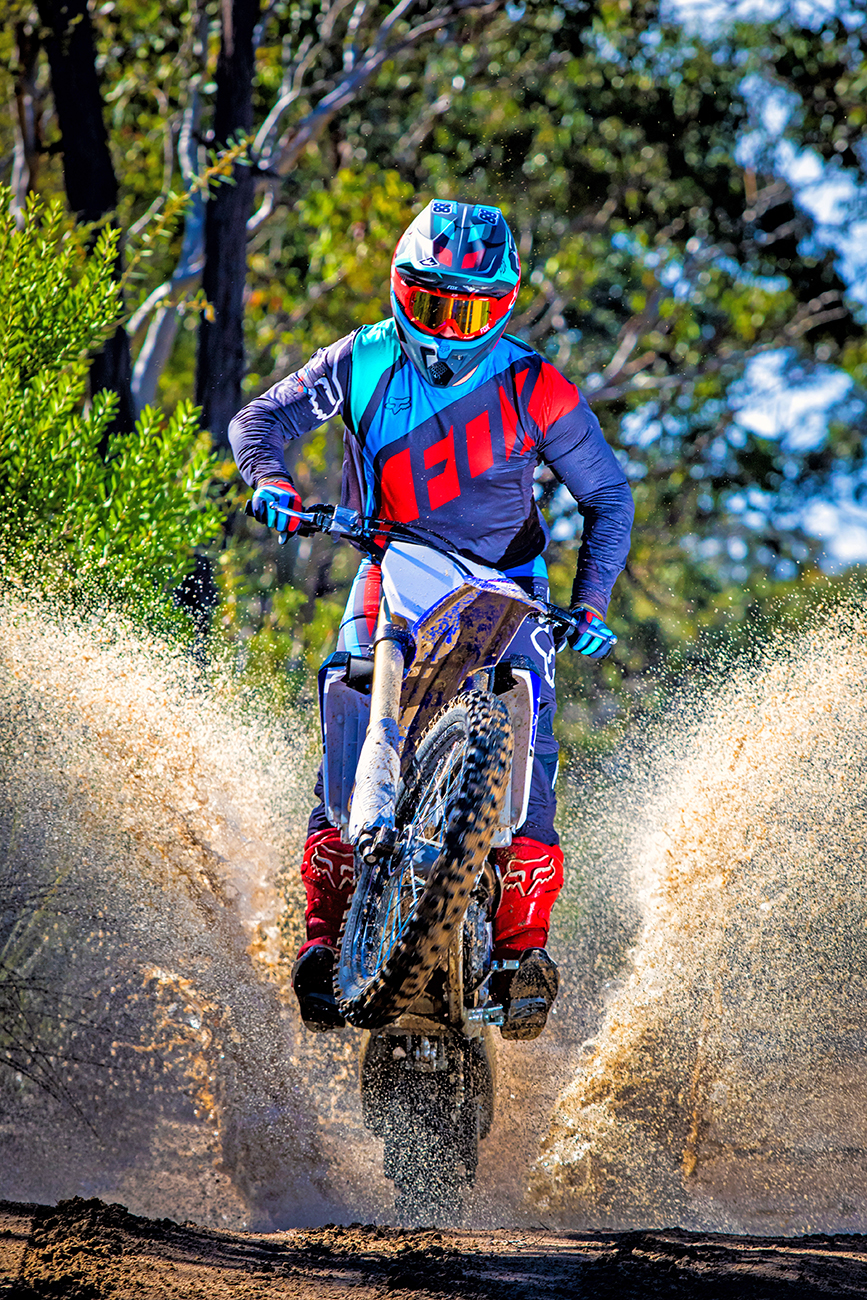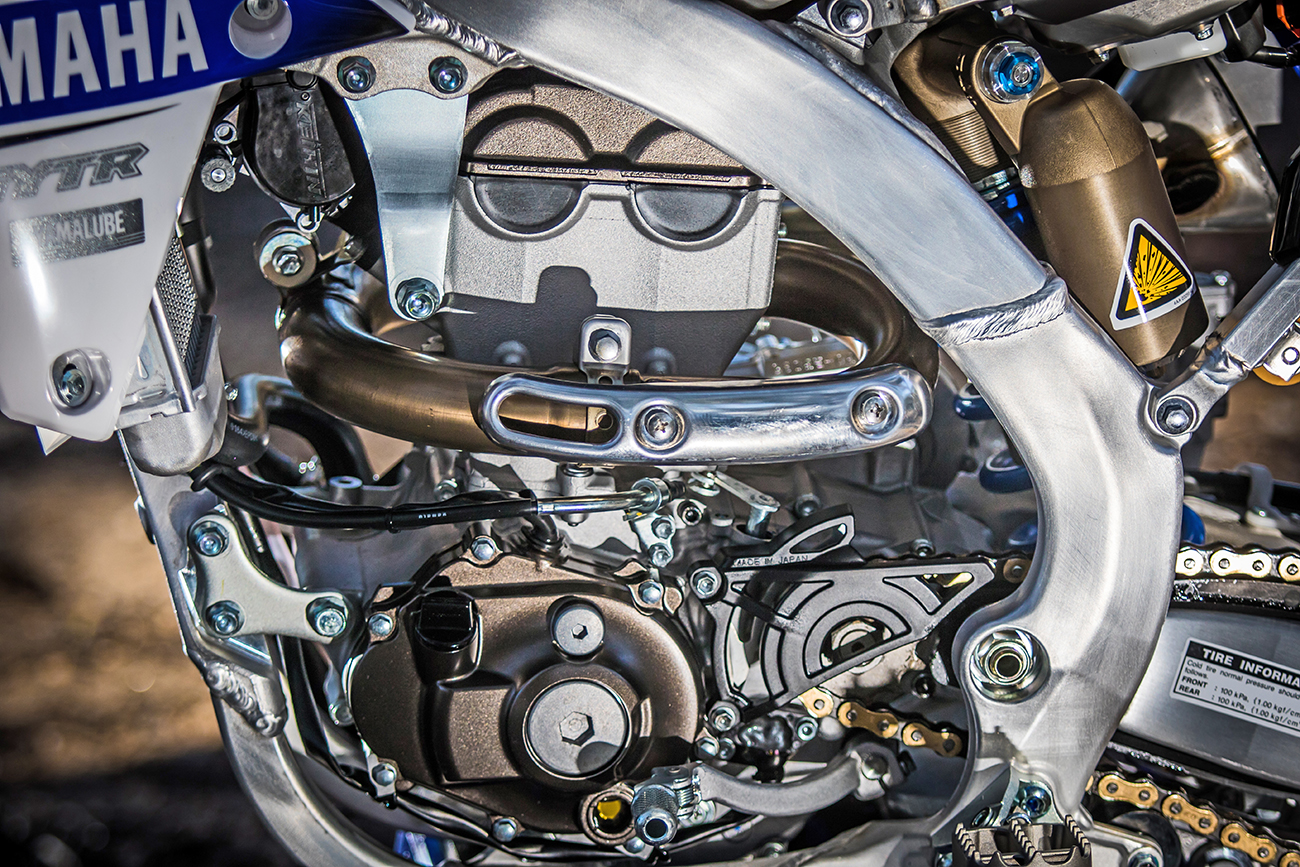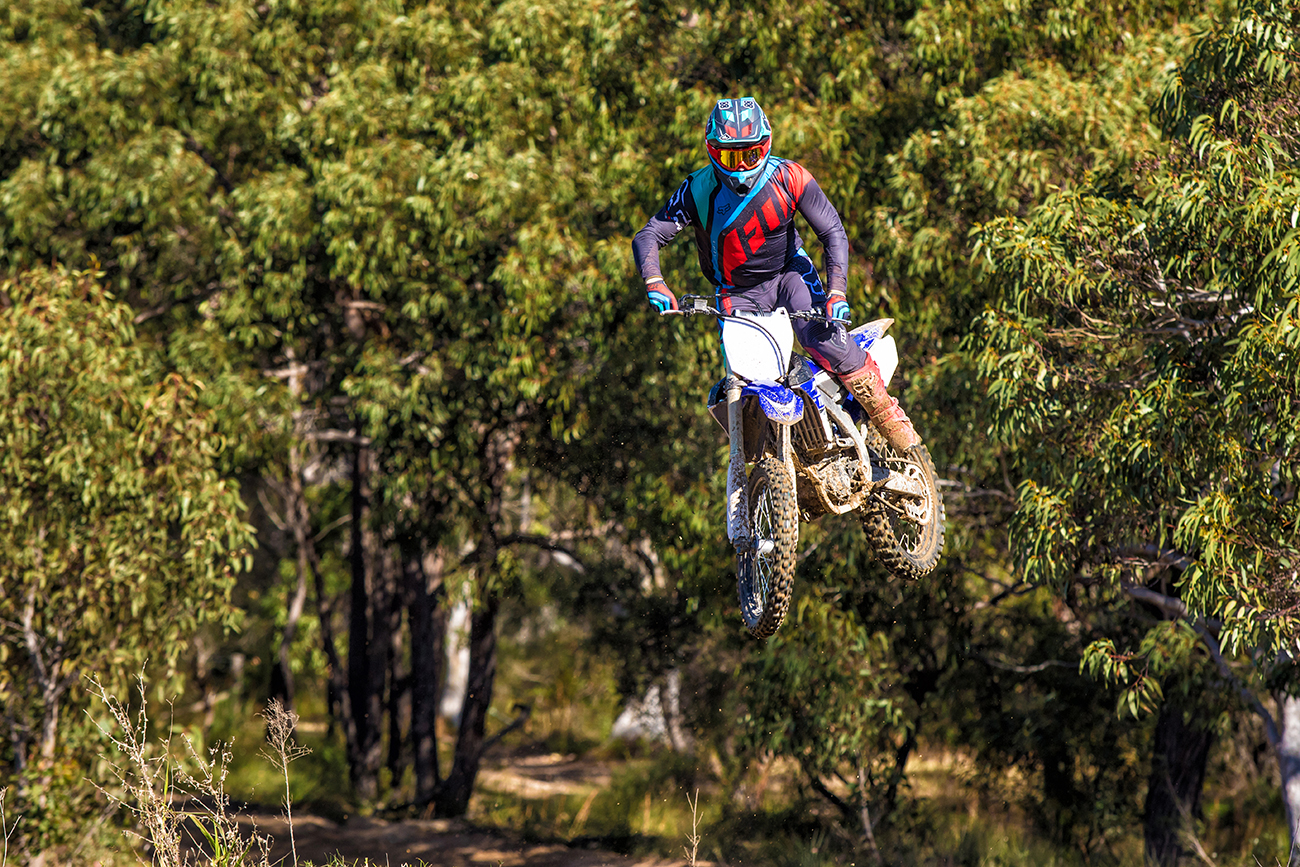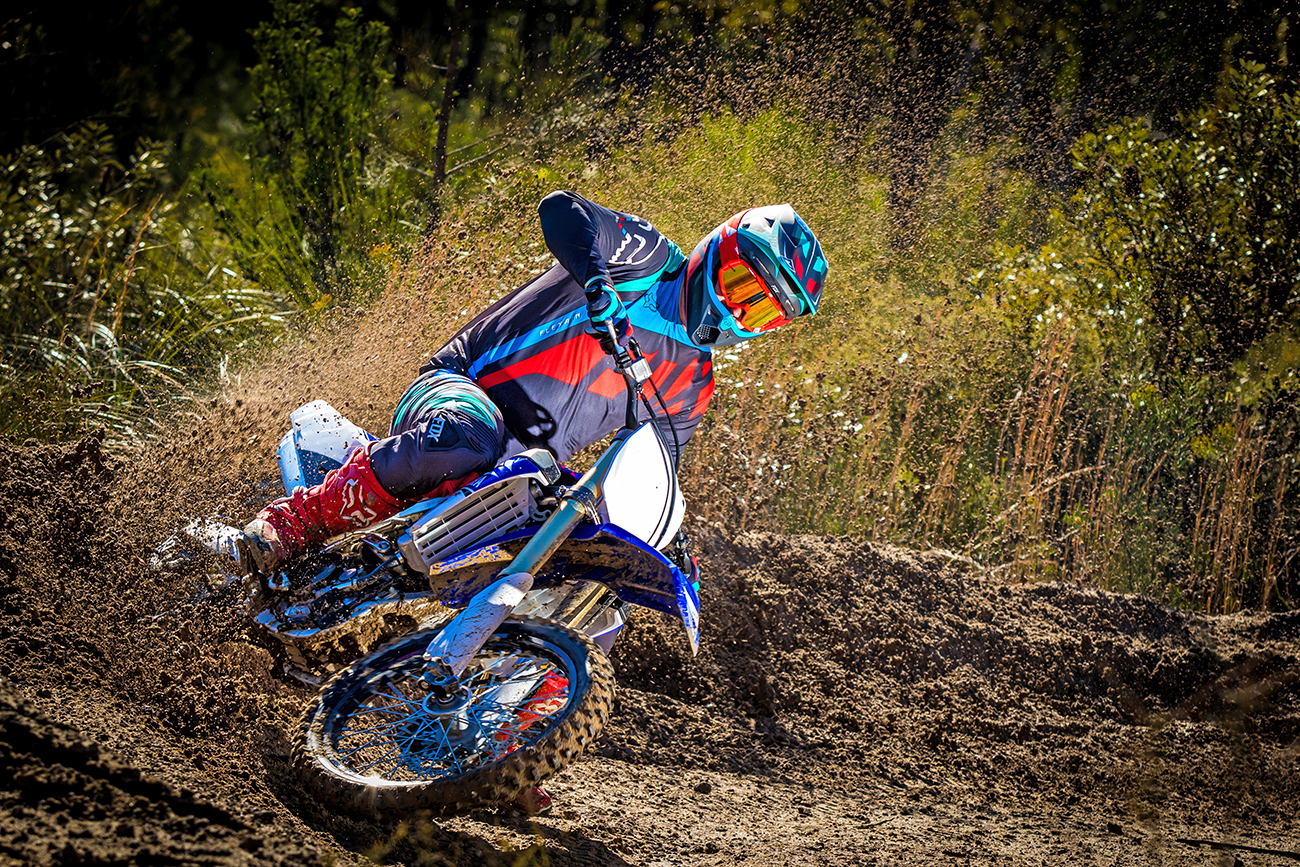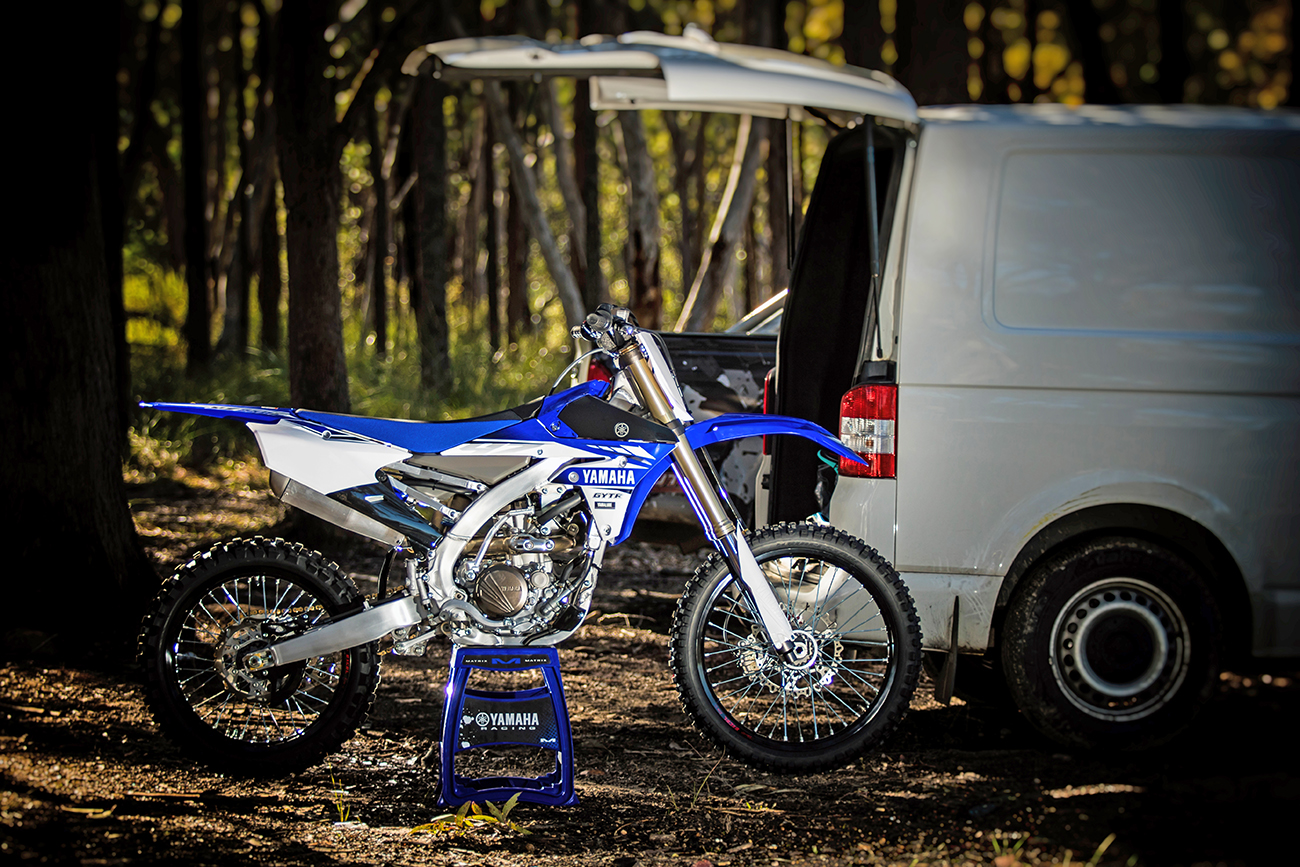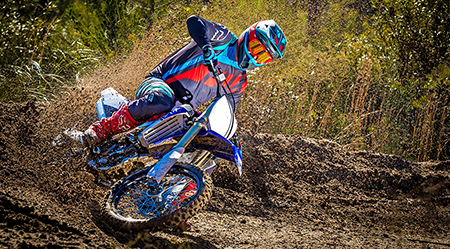
BIKE TEST: 2017 YAMAHA YZ250F
A game changer for the 250 class in 2014, the Yamaha YZ250F has received a solid list of updates that are all hidden behind what could be mistaken for just bold new graphics
STORY SHANE BOOTH PHOTOGRAPHY DAMIEN ASHENHURST
The bike that took the 250F class by storm in 2014 has remained mostly unchanged over the past three years but for 2017 it gets a solid list of changes aimed at reinforcing the strong position this bike has in its class. There isn’t much of the bike that hasn’t received a tweak of some sort: engine, gearbox, footpeg position, frame and even plastic have been updated.
The list of updates looks very much like some of the GYTR performance options that have been available for the bike over the past years. While they may not be identical, it would seem there’s plenty of race-team flow-on into this bike.
THE ENGINE
The engine receives what you could just about call a totally new head. The cam profiles are more aggressive, the porting has been changed, the airbox now has a shorter intake funnel and the valves have also had an update to improve performance and reliability. The crankcase benefits from a new manufacturing process to improve strength and durability. All in all, the updates aim to get air in and out of the engine quicker and more efficiently while maintaining durability.
On track, the bike is noticeably more responsive than the previous model. To me it feels somewhere along the line of some of the modified YZ250F race bikes I’ve ridden. It revs quicker and probably the biggest difference I noticed was in the top-end performance: it seems to keep pulling longer into the high rpm than it used to. The solid torque this bike has always had is still there and even slightly improved, which is a nice complement to the additional over-rev performance.
On the track, it’s a nice engine to ride. For a 250F it has plenty of grunt off turns and doesn’t require you to chase as much as some of the other machines in the class. It responds well to some increased rpm but it’s not a 250F that needs excessive revs to produce performance. You can easily torque this thing off slick or hard-pack turns, which is nice.
When this bike was released in 2014 it set a new benchmark for engine performance in this class and with these improvements it will stay at the front of the pack.
On track, the bike is noticeably more responsive than the previous model. To me it feels somewhere along the line of some of the modified YZ250F race bikes I’ve ridden
THE FRAME
The frame had been stiffened to improve the bike’s agility and responsiveness and the footpegs have been lowered 5mm to help improve weight distribution. Most of the change is around the swingarm pivot area where the frame has been thickened up by around 12mm, very similar to the 450.
On the track, it feels easy to change lines and place it where you like, which is what riders are looking for. While the previous bike was hardly a heavy beast, the ’17 may just be that little more refined and nimble with these changes. The position is something that I liked and if I’m not mistaken it’s now in the same position as the 450.
SUSPENSION
The suspension hardware essentially remains the same — no air forks here, but the setting has been refined to match the chassis updates. The bike remains a very stable platform that does everything predictably and without any major issues.
The new settings work well with the new chassis and there is no sign of any harshness that may concern riders when they hear the frame has been stiffened up. I like the feel of the KYB SSS forks and have no issue with them not being of the air variety.
TRANSMISSION
This area of the bike has received a whole bunch of changes and to be honest I never thought there was an issue with shifting performance on the bike. The gearbox has had a bunch of parts smoothed out and tweaked to improve shifting performance and consistency.
On the track, I had no issues at all with gear changes and they all dropped in nice and smooth. But I’d be hard pressed to say it’s better than last year, simply because I never felt an issue there, either.
The new settings work well with the new chassis and there is no sign of any harshness that may concern riders when they hear the frame has been stiffened up.
WHAT ELSE?
There’s a new standard map setting for the ECU to match up with the changes. You also have the option of purchasing a Power Tuner, which will make it very easy to adjust the mapping without the need for a laptop. At this point I haven’t adjusted anything but we’ve been supplied one from Yamaha and we’ll tweak some settings to see what we can come up with.
The airbox has been remoulded around the Dzus clips to seat them deeper so there’s less chance of catching them with your legs and popping one open while riding. It’s surprising they went to that effort rather than maybe returning to an 8mm bolt, as many of the race teams do. The Dzus clips are definitely handy but can be a little bit fiddly and at a motocross race you’re generally pressed for time to change an air filter.
A few gold anodised bits have been added: the chain adjuster blocks and the front brake pinch get that treatment. The bike carries over the 270mm front brake rotor and also the four-way-adjustable handlebar positions, which are a nice touch. There are also some new graphics that include decals on the front and rear fenders, which add a little more punch to the look.
THE WRAP-UP
A bike that was no slouch to begin with has now had some timely updates to help it maintain its position at the pointy end of the 250 class. The engine is more responsive and has improved top end and over-rev while the chassis and suspension changes help it feel just that little bit more responsive and nimble. The culmination of a host of small updates has really injected a performance kicker at a time when the competition is closing the performance gap on the YZF. This bike will keep YZF riders happy and ensure they have a machine capable of running at the front.
2017 YAMAHA YZ250F SPECS
Engine type: Liquid-cooled, 4-stroke, DOHC, 4 valves
Displacement: 250cc
Bore/stroke: 77×53.6mm
Compression ratio: 13.5:1
Lubrication system: Wet sump
Fuel management: Fuel Injection
Ignition: TCI
Starter system: Kick
Fuel tank capacity: 7.5L
Oil capacity: 0.9L
Final transmission: Constant mesh 5-speed
Length: 2170mm
Width: 825mm
Height: 1280mm
Seat height: 965mm
Wheelbase: 1475mm
Ground clearance: 330mm
Dry weight: 99kg
Wet weight: 105kg with 7.5L fuel
Frame type: Bilateral beam
Suspension front: Telescopic fork, 310mm travel
Suspension rear: Swingarm (link suspension), 315mm travel
Brakes front: Hydraulic 270mm single disc
Brakes rear: Hydraulic 245mm single disc
Tyres front: 80/100-21 MS32
Tyres rear: 100/90-19 MS32

